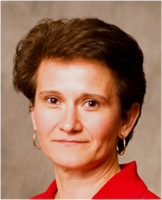With a $90,000 grant from FRAXA Research Foundation over two years, Drs. Olivier Manzoni and Daniela Neuhofer researched the relationship between Fragile X syndrome and the areas of the brain that are involved in reward processing, regulation of emotional behavior and emotional memory as well as attention, planning and working memory.
Read moreNIH
Preclinical Evaluation of Serotonin Receptor Agonists as Novel Pharmacological Tools in Fragile X Syndrome

With a $66,000 grant from FRAXA Research Foundation in 2013, Dr. Lucia Ciranna and her team from the Universita di Catania tested if specific serotonins could reverse abnormal phentotypes found in Fragile X syndrome.
Read moreSmall Rho GTPases, a Potential Therapeutic Target for Fragile X Syndrome

With $384,345 in grants from FRAXA Research Foundation, Dr. MariVi Tejada from the University of Houston focused on a particularly promising point of intervention in pathways of brain receptors, and tested several potential therapeutic compounds in an attempt to rescue function in the mouse model of Fragile X.
Read moreAb-Mediated Translation in Fragile X Syndrome

With a $120,000 grant from FRAXA Research Foundation during 2011-2012, Dr. Cara Westmark at the University of Wisconsin explored the role of AbPP as a potential treatment option for fragile X. AbPP produces b-amyloid which is over-expressed in Alzheimer’s disease (AD) and Down syndrome.
Read moreRole of JNK in FMRP Regulated Translation in Fragile X Syndrome

With a $90,000 grant from FRAXA Research Foundation over 2 years, Dr. Michael Wilhelm and his team at the University of Wisconsin studied a protein known as JNK, which is observed to be abnormally regulated in Fragile X. Like FMRP, it is involved in regulating dendritic protein synthesis, and so it may be a target for drug therapy in Fragile X.
Read moreSerotonergic Rescue of Synaptic Plasticity in FMR1 Knockout Mice

With $306,000 in grants from FRAXA Research Foundation, Dr. Julius Zhu from the University of Virginia examined the effects of several drugs such as Buspar and Abilify which manipulate specific serotonin receptors and the effect that has on synaptic plasticity (LTP and LTD).
Read moreAltered Dendritic Synthesis of Postsynaptic Scaffold Protein Shank1 in Fragile X Syndrome

With a $106,800 grant from FRAXA Research Foundation over 2 years, Drs. Stephan Kindler and Hans-Jurgen Kreieinkamp studied a protein, Shank1, which is overabundant in Fragile X syndrome.
Read moreClinical Trials Outcome Measures

With $281,824 in funding from FRAXA Research Foundation from 2002-2011, Dr. Berry-Kravis at the Rush University Medical Center attempted to validate a new automated video tracking system for quantifying physical activity as an outcome measure for Fragile X clinical trials.
Read moreManipulating Basal and mGluR-Stimulated cAMP Level in FXS Model Mice

With a $90,000 grant from FRAXA Research Foundation, Dr. Hongbing Wang’s team from Michigan State University looked at a treatment target “downstream” of the mGluR5 called cyclic AMP (cAMP). Levels of cAMP are lower in FXS patients and animal models, suggesting that it plays a role in FXS. Drugs that raise levels of cAMP may effectively treat Fragile X. We are very pleased to report that, in 2012, Dr. Wang received a 5-year, $250,000 per year R01 grant from NIH to continue this promising research.
Read moreGABAergic Inhibitory Function in Fragile X Syndrome

With a $100,000 grant from FRAXA Research Foundation, Drs. Joshua Corbin and Molly Huntsman from the Children’s National Medical Center examined the role of a particular class of brain cells (inhibitory interneurons) that dampen excessive activity in the “emotional center of the brain” (the amydala). This inhibition is deficient in Fragile X, and so they are looking for ways to remedy this. This is particularly interesting to parents of children who are overly anxious and emotional. They worked with Dr. Walter Kaufmann, a clinician at Kennedy Krieger Institute in Maryland.
Read moreCorrecting Fragile X Syndrome by Inhibiting the Synaptic RNA-Binding Protein CPEB1

The Richter lab is the foremost research group in the world in the study of CPEB, a protein critical for regulation of protein synthesis. With $170,000 in grants from FRAXA Research Foundation over 2008-2011, Dr. Joel Richter of the University of MA Medical School explored whether inhibitions of the CPEB may be a viable approach for treatment of Fragile X.
Read moreThe Slack Potassium Ion channel is a Therapeutic Target for Fragile X

With $282,000 in funding from FRAXA Research Foundation, Dr. Leonard Kaczmarek and colleagues explored association of Slack channels with the Fragile X protein (FMRP).
Read morePilot Clinical Trial of Lithium in Fragile X Shows Promising Results

With a $65,000 grant from FRAXA Research Foundation in 2005, Dr. Berry-Kravis at the Rush University Medical Center conducted a pilot clinical trial of lithium in 15 patients with Fragile X syndrome. Results published.
Read moreSmall Molecule Modulators of Lithium for Treatment of Fragile X Syndrome

With a $219,500 grant from FRAXA Research Foundation, Dr. Stephen Haggarty from Havard/MIT developed a high-throughput drug screen to find compounds that inhibit GSK3, a critical enzyme in Fragile X. He looked for compounds that can accomplish this either alone or in combination with lithium, offering the possibility of enhancing the effectiveness of lithium as a treatment. His drug screen used patient-specific neural progenitor (NP) cells derived from human induced pluripotent stem cells (iPSCs) – which are created from cells in a skin biopsy from people with Fragile X syndrome (FXS) and other autism spectrum disorders.
Read moreAberrant Behavior Checklist in Fragile X Syndrome

With a $10,000 grant from FRAXA Research Foundation, Dr. Hessl at the University of California at Davis led a collaborative study to analyze the Aberrant Behavior Checklist (ABC) as an outcome measure for children and adults with Fragile X syndrome. Results published.
Read moreMouse Models of Fragile X Syndrome

Dr. Ben Oostra and his team at Erasmus University completed and published multiple studies related to Fragile X syndrome. They created the first Fragile X knockout mouse model and went on to perform many critical studies in Fragile X mouse models.
Read more3 Researchers Honored at FRAXA Investigators Meeting
Over 150 scientists from around the globe gathered in Durham, New Hampshire, for FRAXA Research Foundation’s Investigators Meeting on September 21-24, 2008. They came from Australia, Canada, India, Turkey, the U.S., and eight European countries. Their common goal: “to share, collaborate and publish,” in the words of FRAXA’s Medical Director, Michael Tranfaglia, MD, to find effective treatments and a cure for Fragile X, the foremost inherited cause of mental retardation and autism. Most of the attendees were university-based professors, postdoctoral fellows, and graduate students who have FRAXA research grants. Also participating in the meeting were scientists from the National Institutes of Health (NIMH, NICHD, and NINDS), Neuropharm Group PLC, Hoffman LaRoche Inc., GlaxoSmithKline, Indevus, and Seaside Therapeutics, as well as 20 parents of Fragile X children.
Read moreAltered Cyclic AMP Signaling in Fragile X

With $125,000 grant from FRAXA Research Foundation over 2006-2008, Dr. Anita Bhattacharyya at the University of Wisconsin Waisman Center investigated abnormalities in cyclic AMP signaling in Fragile X syndrome. Results published.
Read moreClinical Trial of Aripiprazol in Fragile X Syndrome

With a FRAXA Research Foundation grant of $30,000 in 2006, Dr. Erickson conducted a pilot clinical trial of an available medicine, aripiprazole (brand-name Abilify). This was an open-label 12-week trial in 12 people ages 6–25 years with Fragile X. Results were promising, and published: 10 of the 12 participants showed behavioral improvements.
Read moreFRAXA Contributes $10,000 to NIH grant to Seaside Therapeutics

Randy Carpenter, MD Principal Investigator with Mark Bear, PhD, MIT Co-Investigator (2007) conducted a clinical development of mGluR5 antagonists to treat Fragile X Syndrome and Autism. Seaside Therapeutics received a major grant from the NIH, with additional funding from FRAXA and Cure Autism Now (CAN) to develop STX107, a selective mGluR5 antagonist, as a treatment for Fragile X. Unfortunately, Seaside has since discontinued development of STX107.
Read moreTaurine and Somatostatin as Potential Treatments for Fragile X Syndrome: A Unifying Neuro-Endocrine Hypothesis
With a $74,000 grant from FRAXA Research Foundation, Dr. Abdeslem El Idrissi at CUNY explored the GABA receptor system in Fragile X mice and tested somatostatin and taurine as potential therapies for Fragile X; while somatostatin must be infused intravenously, taurine is available as a nutritional supplement.
Read moreRegulation of Group I Metabotropic Glutamate Receptor Trafficking in Fragile X

With an $83,500 grant from FRAXA Research Foundation in 2005 and 2007, Dr. Anna Fracesconi at Albert Einstein College studied the patterns and pathways of different receptors related to Fragile X.
Read moreHypothalamic Pituitary Adrenal (HPA) Axis Dysregulation in Fragile X Syndrome

The hypothalamic pituitary adrenal (HPA) axis is our central stress response system. FRAXA Research Foundation awarded Dr. Carolyn B. Smith $62,000 in funding in 2005 to explore the HPA axis in Fragile X mice. The results of their study indicate that, in FVB/NJ mice, the hormonal response to and recovery from acute stress is unaltered by the lack of Fragile X mental retardation protein. Results published.
Read moreTransgenic Mouse Models of Fragile X Syndrome

With $736,000 in grants from FRAXA Research Foundation over 2000-2007, Dr. Robert Bauchwitz at Columbia University developed 15 transgenic mouse models of Fragile X syndrome, using them to evaluate a range of experimental treatments. Results published.
Read moreRole of Experience in Regulating Levels of the Fragile X Protein

FRAXA awarded $29,000 in 2001 and $20,000 in 2000 to Kenneth J. Mack, MD, PhD — Mayo Clinic with Peter K. Todd, MD, PhD, Postdoctoral Fellow. While a professor at University of Wisconsin-Madison, Dr. Mack investigated whether and how FMRP levels are regulated in response to neuronal stimulation in vivo (in live animals). He looked at the effects of seizures and of experience in his experiments. Dr. Mack and colleagues published their findings.
Read more
